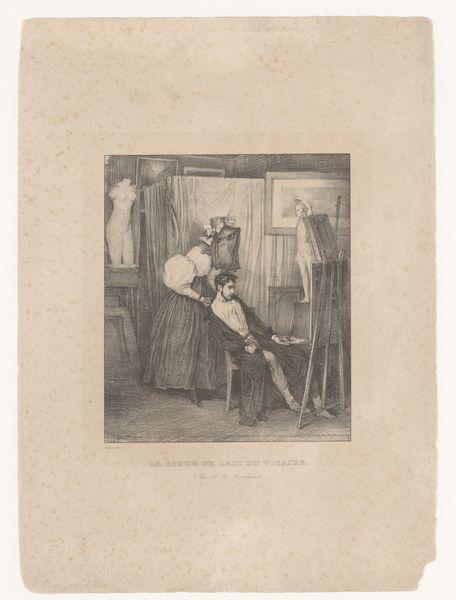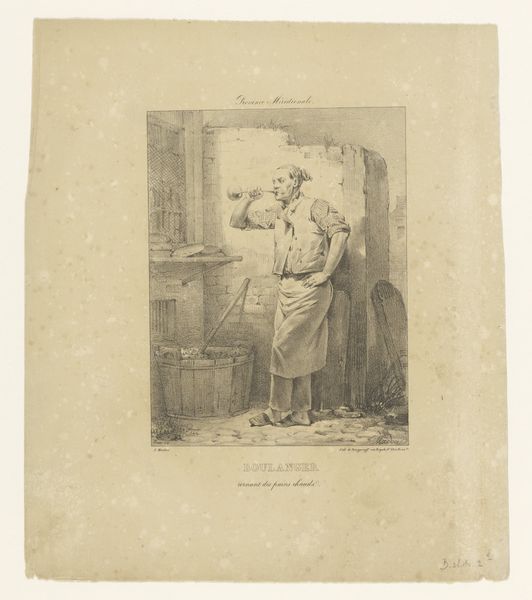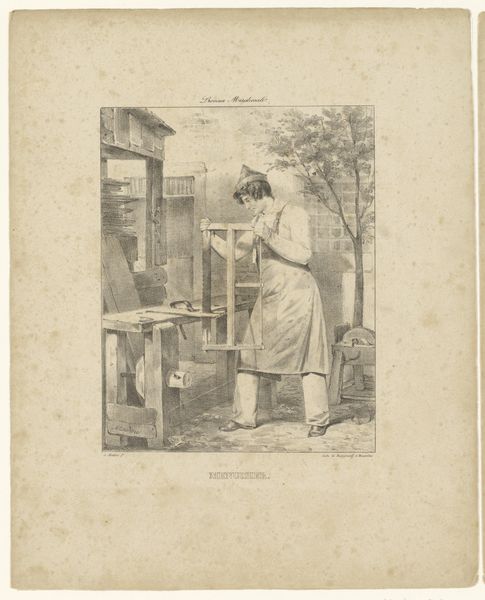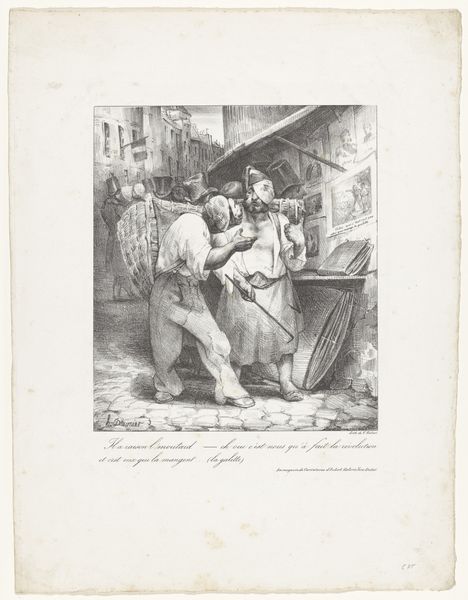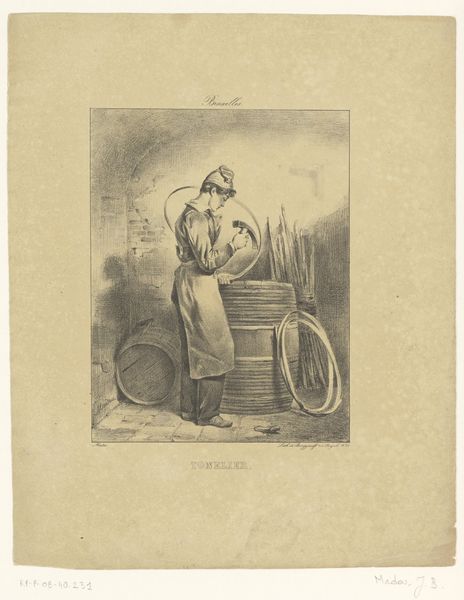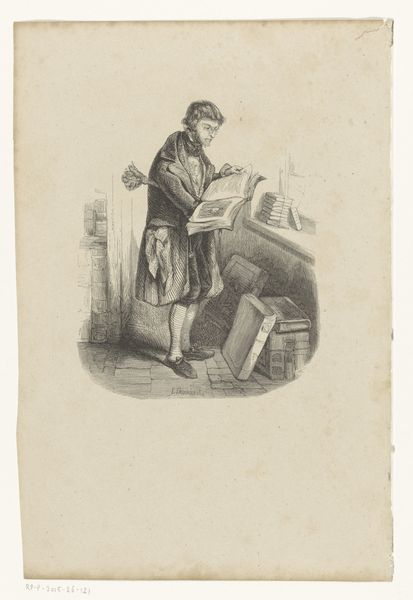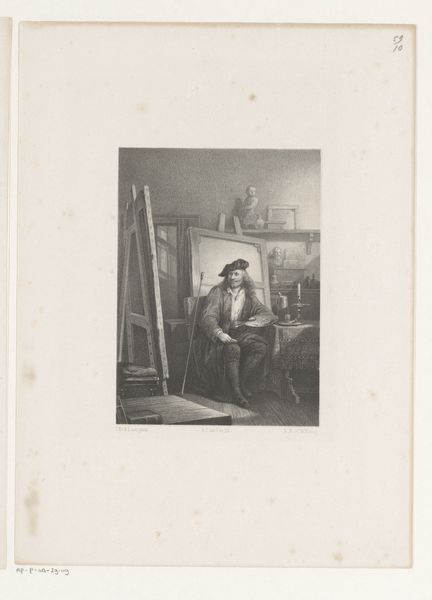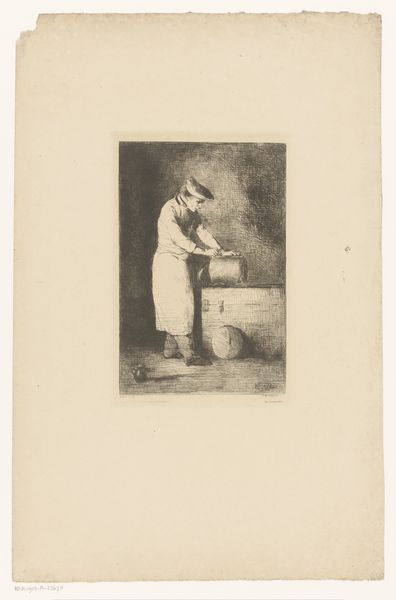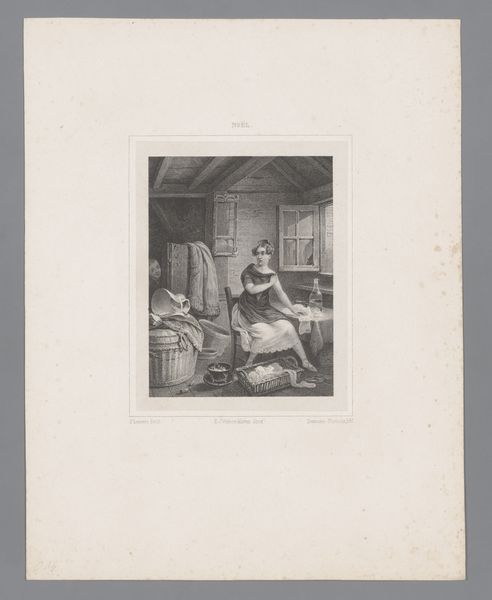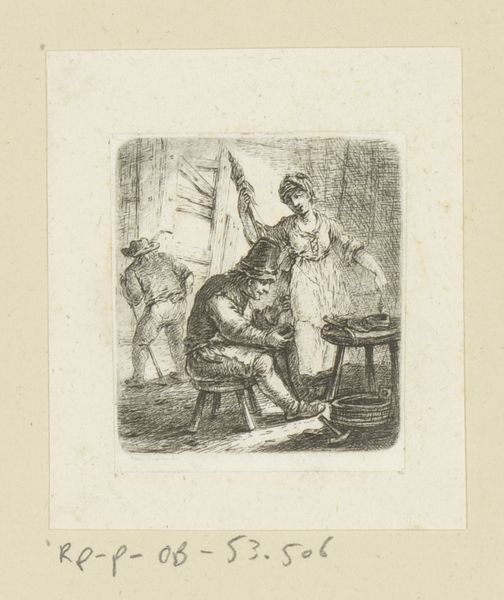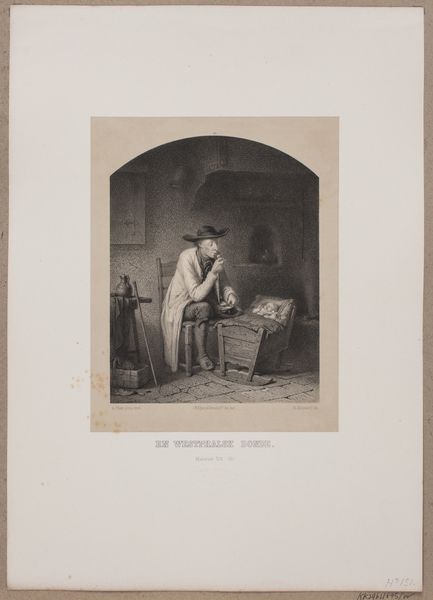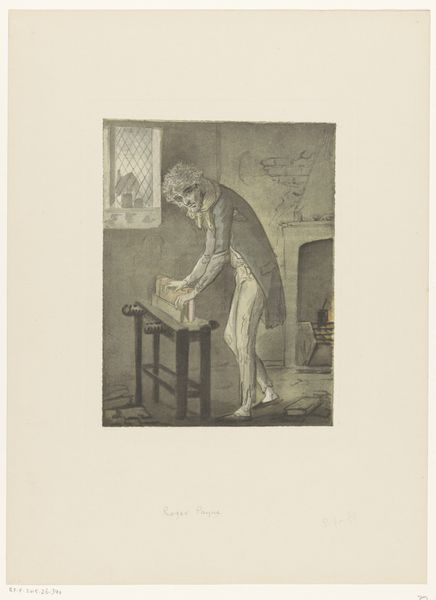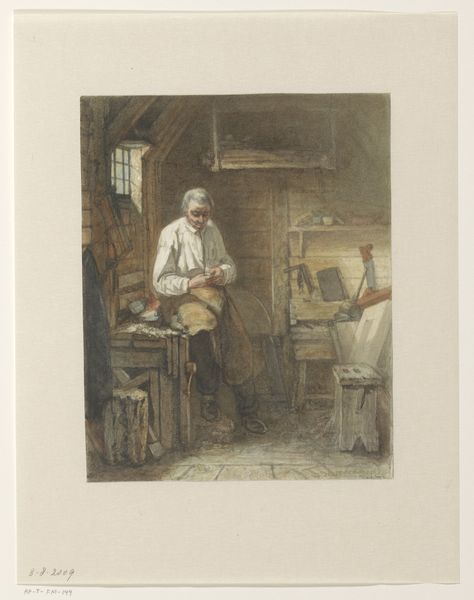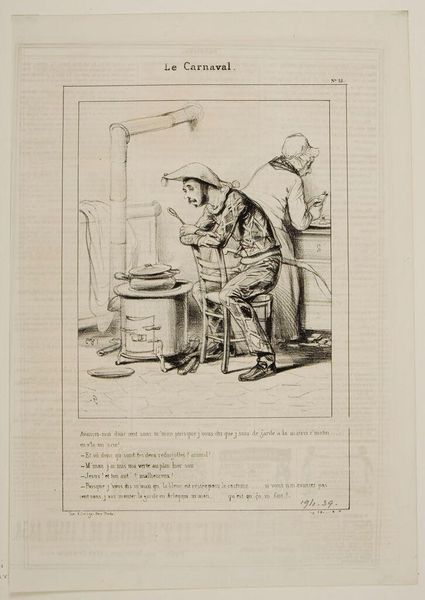
drawing, print, engraving
#
portrait
#
drawing
# print
#
figuration
#
romanticism
#
line
#
genre-painting
#
engraving
Dimensions: height 344 mm, width 274 mm
Copyright: Rijks Museum: Open Domain
Curator: This print, entitled "Slotenmaker aan het werk", which translates to "Locksmith at Work," was created by Jean-Baptiste Madou between 1825 and 1835. It's an engraving. What strikes you most about it? Editor: It feels very... industrious. The blacksmith, framed by his tools and fiery forge, seems stoic. There is this distinct, sort of Romantic-era reverence for labor that seems to permeate the composition. It is a sympathetic depiction. Curator: Exactly. Madou was very interested in portraying the everyday lives of working-class people. These images often circulated as prints, making art more accessible to a broader public and, simultaneously, creating a sense of national identity around common professions. Editor: Did his social background influence this interest? It’s always relevant who is given the authority to depict a certain moment or certain peoples and the potential implications for the interpretation. Curator: Madou came from a relatively modest background himself. And he did seek patronage among the aristocracy and bourgeoisie by showcasing a keen understanding and empathy for these laborers. Editor: It brings up that delicate tension—highlighting working-class struggles and celebrating the nobility of work, while potentially reinforcing existing power structures. Curator: Absolutely. It's a visual balancing act. The detailed rendering gives the figure a sense of dignity. The inclusion of his tools isn’t merely decorative; they symbolize the mastery of his craft. There is the clear appreciation of labour apparent here. Editor: The lighting contributes, too, right? That almost theatrical glow from the furnace casts the artisan as a sort of Promethean figure—not just a locksmith, but a bringer of light and progress. The print isn’t purely documentary; it elevates the subject. Curator: Right, this representation definitely speaks to that era's evolving social awareness and artistic tastes, as well as new ideas and societal frameworks that began emerging within the political structures and new power hierarchies in the early to mid-1800s. Editor: Viewing it with that lens is key. Thanks for outlining all that background! I feel like I better grasp the dynamics at play in this work. Curator: It’s rewarding to view this portrait as less just a genre piece, but something speaking more broadly about its culture.
Comments
No comments
Be the first to comment and join the conversation on the ultimate creative platform.
